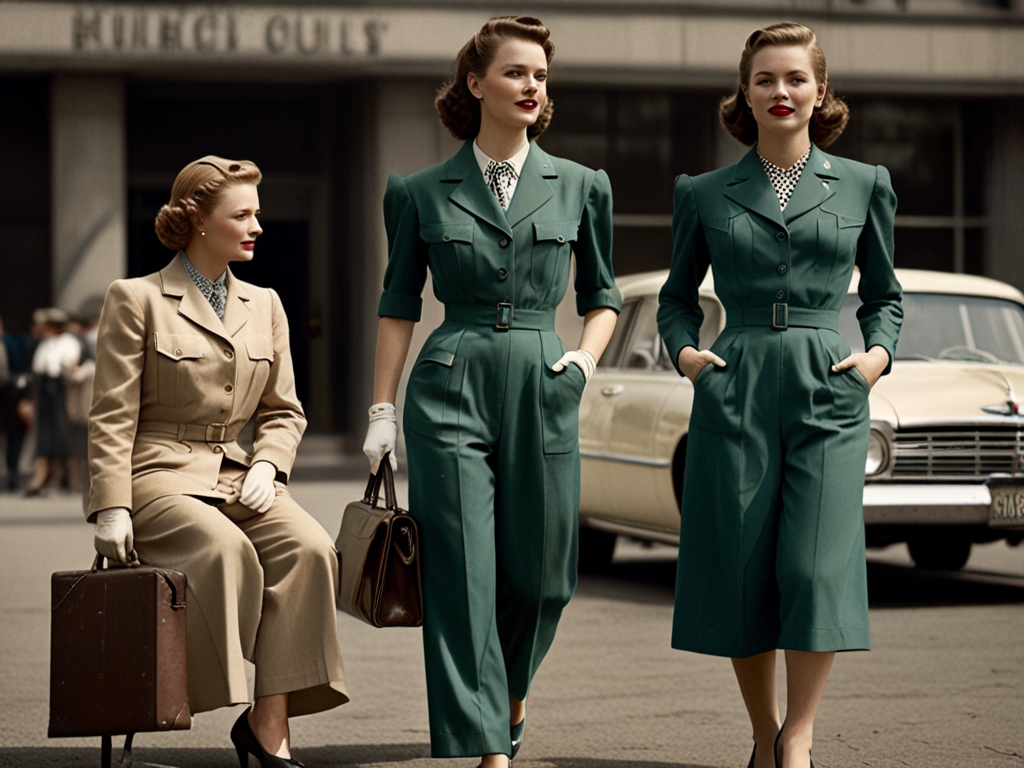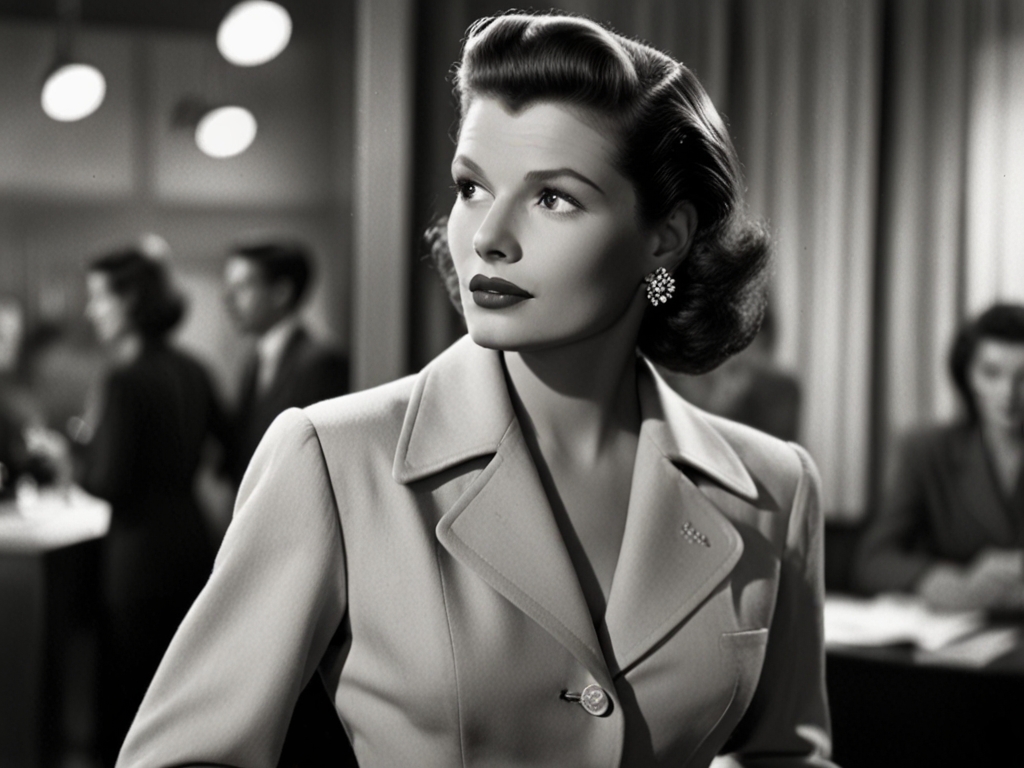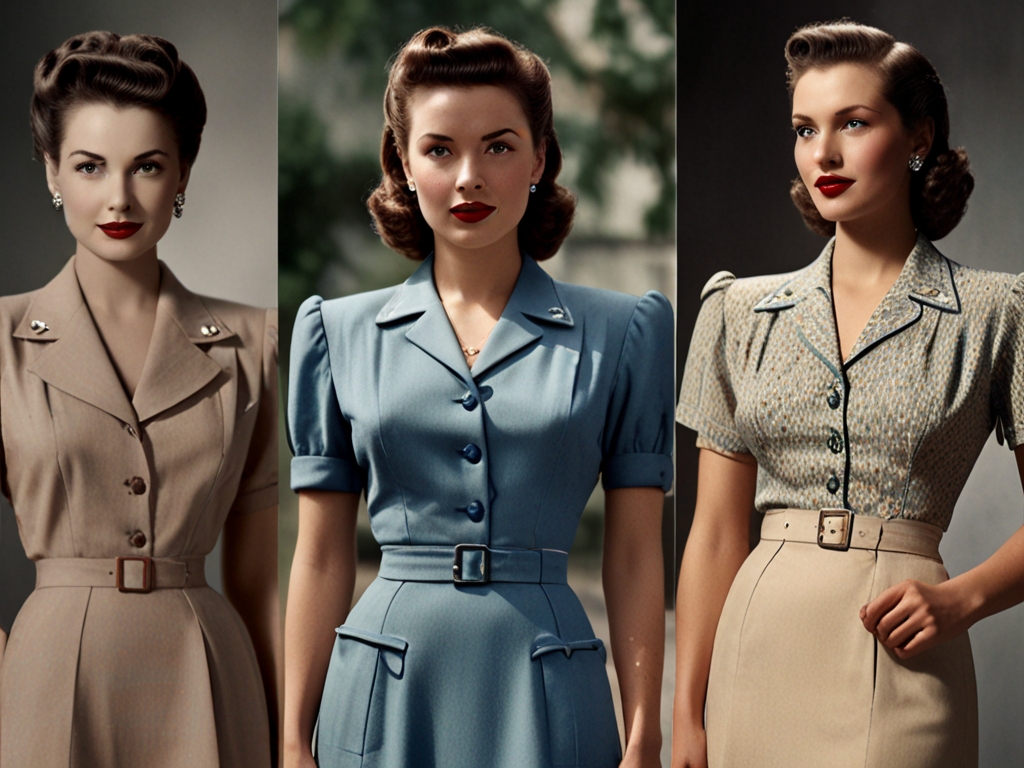Introduction
The 1940s was a decade of dramatic change, marked by World War II and its aftermath. These changes were deeply reflected in the fashion of the time. **1940s women’s fashion** was characterized by a blend of practicality and elegance, influenced by the socio-economic conditions of the era. In this article, we’ll explore the iconic styles of 1940s women’s fashion, delving into the trends, fabrics, accessories, and influential figures that defined this timeless period.
The Historical Context of 1940s Women’s Fashion
Understanding the historical context is crucial to appreciating the evolution of **1940s women’s fashion**. The outbreak of World War II in 1939 brought about significant shifts in daily life, including fashion. With fabric rationing and the need for practicality, women’s clothing became more utilitarian. However, this did not mean a lack of style. Instead, women found innovative ways to maintain their elegance despite the constraints.
The Influence of World War II on Fashion
The war effort required women to take on roles traditionally held by men, leading to the adoption of more practical clothing. Utility clothing, introduced in the early 1940s, featured simpler designs with fewer embellishments. These garments were made from durable fabrics like wool and rayon, which were more readily available during the war.


Key Fashion Trends of the 1940s
The Utility Suit
One of the most iconic pieces of **1940s women’s fashion** was the utility suit. Designed for practicality and comfort, these suits were tailored yet straightforward. They often featured structured shoulders and a defined waist, embodying the era’s emphasis on both functionality and femininity.
A-Line Skirts and Dresses
A-line skirts and dresses became a staple during the 1940s. Their simple, flared shape provided ease of movement and a flattering silhouette. These garments were often worn with tailored blouses or fitted jackets, creating a polished yet practical look.
Military Influences
Military uniforms had a significant impact on civilian fashion. Elements such as epaulets, belted waists, and khaki colors were incorporated into everyday wear. This trend not only reflected the times but also added a sense of structure and strength to women’s fashion.
Iconic Fabrics and Patterns
Popular Fabrics
Due to fabric rationing, materials like wool, rayon, and cotton became the mainstays of 1940s women’s fashion. These fabrics were chosen for their durability and availability. Silk, which was needed for parachutes, was largely unavailable, leading to the popularity of synthetic alternatives.
Defining Patterns
Patterns played a crucial role in adding visual interest to the otherwise simple designs of the 1940s. Plaids, florals, and stripes were particularly popular. These patterns were often used in day dresses, skirts, and blouses, providing a cheerful contrast to the era’s somber backdrop.
Signature Accessories
Statement Hats and Headscarves
Accessories were essential in completing the 1940s look. Hats were particularly popular, ranging from small, modest styles to bold, statement pieces. Headscarves also became a fashion staple, serving both practical and decorative purposes.
Gloves and Handbags
Gloves and handbags were integral to 1940s women’s fashion. Gloves added a touch of sophistication and were worn with both casual and formal outfits. Handbags, often made from sturdy materials like leather, were designed to be both stylish and functional.
Footwear Trends
Footwear in the 1940s ranged from practical to elegant. For everyday wear, women favored sturdy shoes with low heels. For more formal occasions, peep-toe heels became a popular choice, offering a glimpse of glamour without compromising on comfort.
Influential Fashion Figures of the 1940s
Designers
Several designers left a lasting mark on 1940s women’s fashion. Christian Dior, for instance, introduced the “New Look” in 1947, which featured full skirts and nipped-in waists, signaling a return to opulence after the austerity of the war years.
Hollywood Stars
Hollywood played a pivotal role in shaping fashion trends. Actresses like Katharine Hepburn and Rita Hayworth became style icons, influencing the clothing choices of women worldwide. Their on-screen wardrobes often featured elements that women aspired to replicate in their everyday lives.
Everyday Women
Ordinary women also became fashion influencers during the 1940s. The practical yet stylish outfits worn by factory workers, nurses, and homemakers reflected the resourcefulness and resilience of the time. These women demonstrated that fashion could be both functional and fashionable.
The Lasting Legacy of 1940s Women’s Fashion
Influence on Modern Fashion
The influence of 1940s women’s fashion is still evident in contemporary styles. Elements like structured silhouettes, A-line skirts, and military-inspired details continue to inspire modern designers. The emphasis on practicality paired with elegance remains a timeless fashion principle.
Revival of 1940s Styles
There has been a notable revival of 1940s styles in recent years. Vintage fashion enthusiasts and designers alike have embraced the era’s aesthetics, incorporating them into modern collections. This revival underscores the enduring appeal of 1940s fashion.
Timeless Appeal
The timeless appeal of 1940s fashion lies in its combination of practicality and elegance. Despite the constraints of the era, women found ways to express their style and individuality. This resilience and creativity continue to resonate with fashion lovers today.
Real Fashion Evolution start from 1940s, coloring book that indicate.
1940s Fashion Coloring Book

1940s-2020s Dresses Coloring Book

Consolation
**1940s women’s fashion** is a testament to the resilience and creativity of women during a challenging time in history. From utility suits to A-line skirts, the fashion of the 1940s combined practicality with elegance, leaving a lasting legacy. The influence of this decade can still be seen in modern fashion, proving that the styles of the 1940s remain as timeless as they are iconic. Whether through the revival of vintage trends or the enduring principles of practicality and sophistication, 1940s women’s fashion continues to inspire and captivate.



